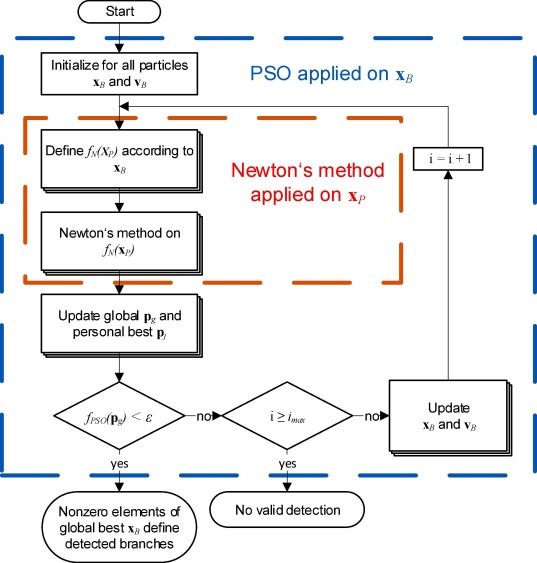On WAMS-based Emergency Outage Detection using Optimization

Figure: Flow chart of the optimizer based on a superordinate PSO and Newton’s method
Accurate state awareness of a system is an important factor for secure grid operation. The system state is usually provided by state estimators. Traditionally, the input data of state estimators consists of the topology and asynchronous measurements – voltage, current, power, etc. – based on SCADA systems with update rates down to several seconds. With the increasing exploitation of PMUs, algorithms for dynamic state estimators are being developed using the synchronized and quickly updated measurements available now. However, the correct system topology remains a crucial factor in the quality of the state estimation. Therefore, an accurate detection of branch outages is of great importance. A special problem situation arises in grid areas on the responsibility border of different grid operators, where only sparse real time information is shared.
In this publication, an optimization-based algorithm for the detection of multi-branch outages is presented. The main advantage is its ability to detect an unknown number of tripped branches in meshed power systems solely based on node voltage angle information obtained with phasor measurement units (PMUs). The proposed algorithm uses a hybrid optimization approach combining particle swarm optimization with Newton’s method. The algorithm is tested on linearized load flow data as well as on a dynamic simulation of the Nordic-32-Bus system. In a sensitivity analysis the influence of the optimizer’s main parameters and the robustness against linearization errors and missing data is shown. The high ratio of correct detection results across the whole range of evaluated parameters identifies the proposed algorithm as a useful supportive tool for future decentralized SCADA applications.

Figure: Test process of the detection algorithms with dynamic simulation data
The paper is published in the International Journal of Electrical Power and Energy Systems.

